Learning Patterns: A Pattern Language for Creative Learning
-
Takashi Iba, with Iba Laboratory, Learning Patterns: A Pattern Language for Creative Learning, CreativeShift Lab, 132 pages, 2014
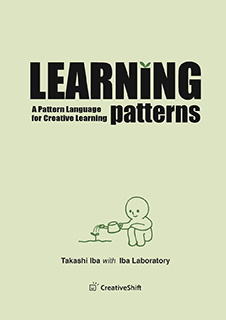 In Creative Learning, learner creates opportunities for learning by himself/herself by launching and implementing his/her own project, and learn through actively creating with others. How can such a Creative Learning be achieved? The secrets are scribed in this book. Learning Patterns presents 40 distinct patterns that show tips, methods, and views for a Creative Learning. The Learning Patterns are written as a pattern language that summarizes the design knowledge that develops from a personfs experience into the form of a pattern. It pairs a problem that occurs in a certain context of a design with its solution and gives it a name. Read through the pages and use any or all of the Learning Patterns to make your learning more creative!
In Creative Learning, learner creates opportunities for learning by himself/herself by launching and implementing his/her own project, and learn through actively creating with others. How can such a Creative Learning be achieved? The secrets are scribed in this book. Learning Patterns presents 40 distinct patterns that show tips, methods, and views for a Creative Learning. The Learning Patterns are written as a pattern language that summarizes the design knowledge that develops from a personfs experience into the form of a pattern. It pairs a problem that occurs in a certain context of a design with its solution and gives it a name. Read through the pages and use any or all of the Learning Patterns to make your learning more creative!
[ Amazon.com / Lulu ]
Presentation Patterns: A Pattern Language for Creative Presentations
-
Takashi Iba, with Iba Laboratory, Presentation Patterns: A Pattern Language for Creative Presentations, CreativeShift Lab, 124 pages, 2014
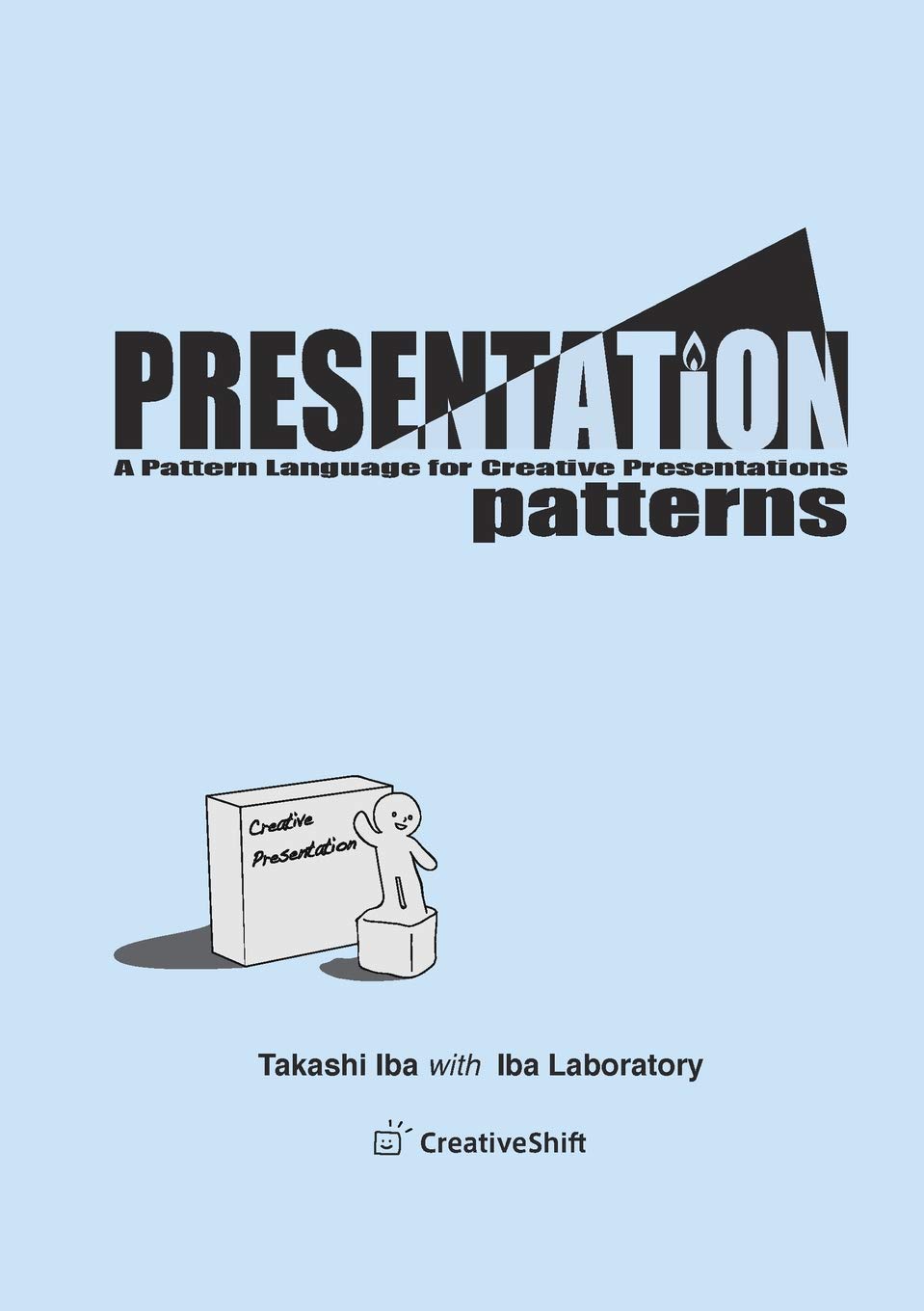 A Creative Presentation uses the knowledge and experience of the audience to inspire the realization of something new. Such a presentation can encourage the audience to realize and take action towards the future. However, as a presentation has limited words, how is such innovation possible? The secrets are scribed in this book. Presentation Patterns presents 34 distinct patterns that show tips, methods, and views for a Creative Presentation. The Presentation Patterns are written as a pattern language that summarizes the design knowledge that develops from a personfs experience into the form of a pattern. It pairs a problem that occurs in a certain context of a design with its solution and gives it a name. Along with discovering methods to give an effective presentation, we hope you can also imagine the possibilities that pattern languages offer.
A Creative Presentation uses the knowledge and experience of the audience to inspire the realization of something new. Such a presentation can encourage the audience to realize and take action towards the future. However, as a presentation has limited words, how is such innovation possible? The secrets are scribed in this book. Presentation Patterns presents 34 distinct patterns that show tips, methods, and views for a Creative Presentation. The Presentation Patterns are written as a pattern language that summarizes the design knowledge that develops from a personfs experience into the form of a pattern. It pairs a problem that occurs in a certain context of a design with its solution and gives it a name. Along with discovering methods to give an effective presentation, we hope you can also imagine the possibilities that pattern languages offer.
[ Amazon.com / Lulu ]
Collaboration Patterns: A Pattern Language for Creative Collaborations
-
Takashi Iba, with Iba Laboratory, Collaboration Patterns: A Pattern Language for Creative Collaborations, CreativeShift Lab, 120 pages, 2014
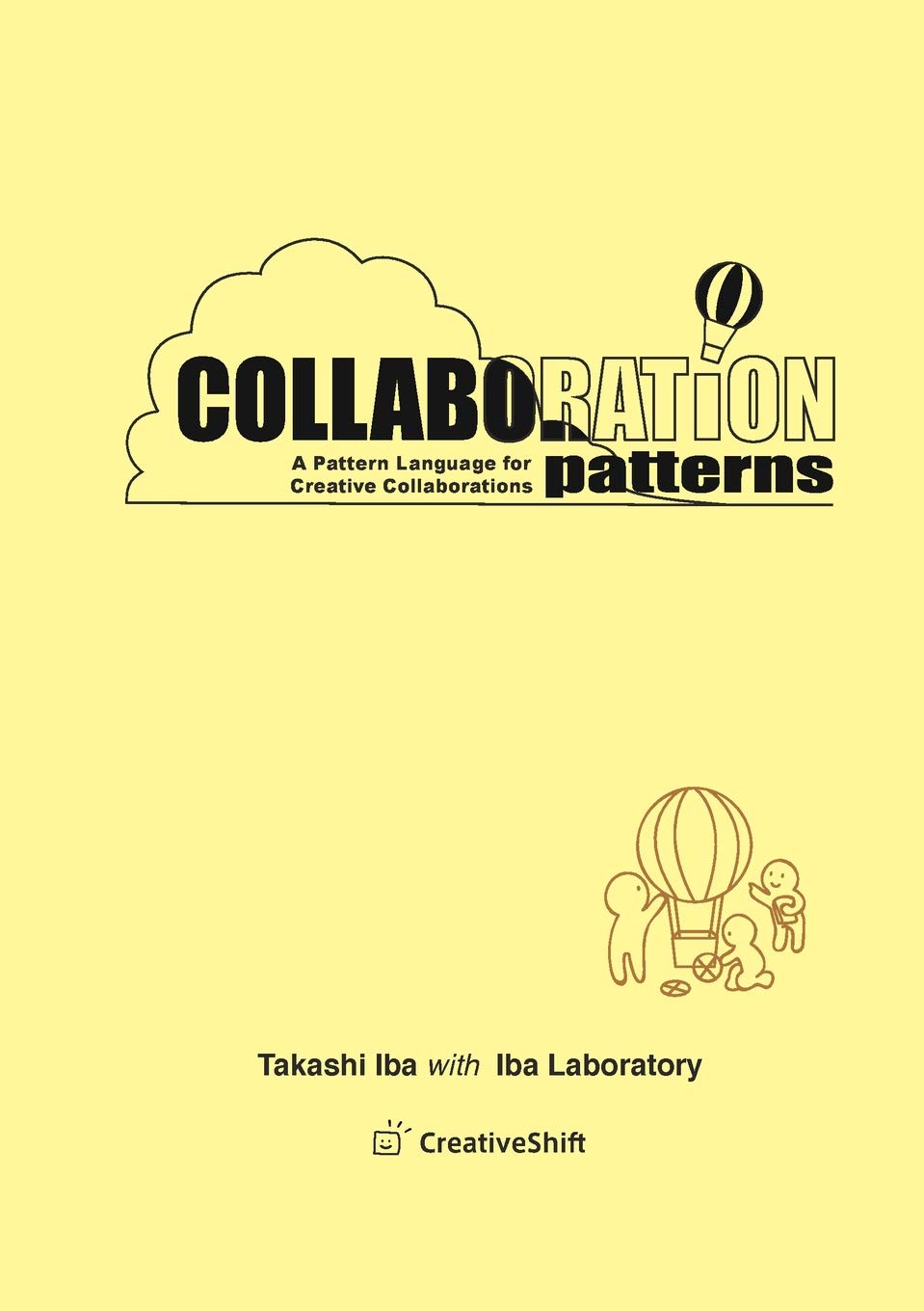 A Creative Collaboration creates new values that can change the world. In a Creative Collaboration, an emergent vigor is produced where team members motivate each other and grow together. This new vigor cannot be attributed to any one team member but to the team as a whole. How can such a Creative Collaboration be achieved? The secrets are scribed in this book. Collaboration Patterns presents 34 distinct patterns that show tips, methods, and views for a successful collaboration. The Collaboration Patterns are written as a pattern language that summarizes the design knowledge that develops from a personfs experience into the form of a pattern. It pairs a problem that occurs in a certain context of a design with its solution and gives it a name. Along with discovering ways to practice effective teamwork, we hope you can also imagine the possibilities pattern languages offer.
A Creative Collaboration creates new values that can change the world. In a Creative Collaboration, an emergent vigor is produced where team members motivate each other and grow together. This new vigor cannot be attributed to any one team member but to the team as a whole. How can such a Creative Collaboration be achieved? The secrets are scribed in this book. Collaboration Patterns presents 34 distinct patterns that show tips, methods, and views for a successful collaboration. The Collaboration Patterns are written as a pattern language that summarizes the design knowledge that develops from a personfs experience into the form of a pattern. It pairs a problem that occurs in a certain context of a design with its solution and gives it a name. Along with discovering ways to practice effective teamwork, we hope you can also imagine the possibilities pattern languages offer.
[ Amazon.com / Lulu ]
Words for a Journey: The Art of Being with Dementia
-
Takashi Iba, and Makoto Okada (Eds), Iba Laboratory and Dementia Friendly Japan Initiative, Words for a Journey: The Art of Being with Dementia, CreativeShift Lab, 120 pages, 2015
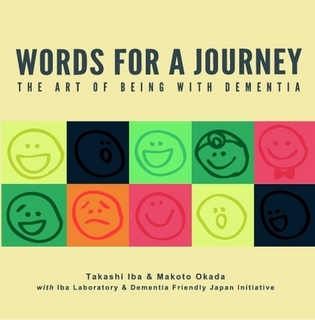 There are many with dementia who are living well. They have not given up everything in their lives just because they have the disease. It is a fact that you will have to make some changes in your lifestyle once you have been diagnosed with dementia; but try looking at it this way: if you are going to have to make changes, why not make good ones? Think of it as the start of a new journey: a journey to live well with dementia.
This book provides positive, practical hints for living well with dementia. Each hint describes a gcontexth that people with dementia and the people around experience and a gproblemh that is commonly associated with the situation. Following this, a gsolutionh on how to cope with the problem is described.
These hints were determined through interviews, meaning that there are people are living well with dementia by using this knowledge. By sharing these wisdoms with a broad audience, our hope is to make everyonefs life with dementia better.
There are many with dementia who are living well. They have not given up everything in their lives just because they have the disease. It is a fact that you will have to make some changes in your lifestyle once you have been diagnosed with dementia; but try looking at it this way: if you are going to have to make changes, why not make good ones? Think of it as the start of a new journey: a journey to live well with dementia.
This book provides positive, practical hints for living well with dementia. Each hint describes a gcontexth that people with dementia and the people around experience and a gproblemh that is commonly associated with the situation. Following this, a gsolutionh on how to cope with the problem is described.
These hints were determined through interviews, meaning that there are people are living well with dementia by using this knowledge. By sharing these wisdoms with a broad audience, our hope is to make everyonefs life with dementia better.
[ Amazon.coom / Lulu ]
Survival Language: A Pattern Language for Surviving Earthquakes
-
Tomoki Furukawazono and Takashi Iba, with Survival Language Project, Survival Language: A Pattern Language for Surviving Earthquakes, CreativeShift Lab, 90 pages, 2015
 Survival Language is a pattern language to provide individual survival techniques to use when a catastrophic earthquake occurs. The basis of this proposal comes from the problem that although countries like Japan have experienced numerous catastrophic earthquakes, preventable tragedies continue to be repeated. Survival Language presents 20 distinct patterns that show tips, methods, and views for surviving earthquake. Survival Language seeks to improve a personfs immediate decisions when an earthquake strikes and to encourage them to recall earthquake safety measures even in ordinary moments of daily life. A personfs survival often depends on their own strength, knowledge, and skills the time at which the disaster strikes.
Survival Language is a pattern language to provide individual survival techniques to use when a catastrophic earthquake occurs. The basis of this proposal comes from the problem that although countries like Japan have experienced numerous catastrophic earthquakes, preventable tragedies continue to be repeated. Survival Language presents 20 distinct patterns that show tips, methods, and views for surviving earthquake. Survival Language seeks to improve a personfs immediate decisions when an earthquake strikes and to encourage them to recall earthquake safety measures even in ordinary moments of daily life. A personfs survival often depends on their own strength, knowledge, and skills the time at which the disaster strikes.
[ Amazon.com / Lulu ]
Change Making Patterns: A Pattern Language for Fostering Social Entrepreneurship
-
Eri Shimomukai, Sumire Nakamura with Takashi Iba, Change Making Patterns: A Pattern Language for Fostering Social Entrepreneurship, CreativeShift Lab, 100 pages, 2015
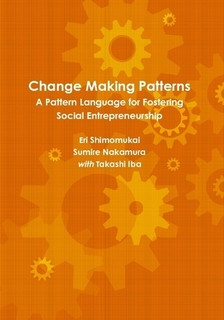 Social entrepreneurship has been a trend in the last decade, attracting many youth to voice their concerns about social issues. However, there is still a huge gap between those upfront social entrepreneurs and the citizens, the latter of whom struggle to find a good starting point or feel overwhelmed by the complexity of the problems.
Change Making Patterns captures the essentials that future actors can consult to create their ideal change. The 31 distinctive patterns show how social entrepreneurs identify social issues and create or implement solutions to overcome these issues. This set of tacit knowledge is disclosed for you to not only learn how social entrepreneurship is executed in difficult situations but also start your own changemaking project.
Social entrepreneurship has been a trend in the last decade, attracting many youth to voice their concerns about social issues. However, there is still a huge gap between those upfront social entrepreneurs and the citizens, the latter of whom struggle to find a good starting point or feel overwhelmed by the complexity of the problems.
Change Making Patterns captures the essentials that future actors can consult to create their ideal change. The 31 distinctive patterns show how social entrepreneurs identify social issues and create or implement solutions to overcome these issues. This set of tacit knowledge is disclosed for you to not only learn how social entrepreneurship is executed in difficult situations but also start your own changemaking project.
[ Amazon.com / Lulu ]
Pattern Illustrating Patterns: A Pattern Language for Pattern Illustrating
-
Takashi Iba with Iba Laboratory, Pattern Illustrating Patterns: A Pattern Language for Pattern Illustrating, CreativeShift Lab, 92 pages, 2015
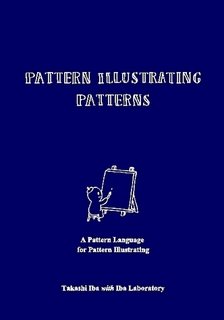 Recently, the field of pattern language has been developing in various domains. Patterns are usually expressed in sentences, along with a visual expression. One of these expressions is called a gpattern illustrationh because it expresses the essence of the pattern, includes characters that express human movements and feelings, and symbolically represents a pattern that does not connect multiple scenes with arrows.
Pattern illustration describes the patternfs primary content, and this helps readers understand and memorize the pattern and also motivates them to use it. But our question here is gHow can we draw these pattern illustrations?h
In this book, Pattern Illustrating Patterns, we have collected 28 patterns on how and what to draw and what aspects must be considered when creating pattern illustrations.
We hope this book will stimulate further understanding about including pattern illustration as an approach to visual aid by those considering or creating pattern languages.
Recently, the field of pattern language has been developing in various domains. Patterns are usually expressed in sentences, along with a visual expression. One of these expressions is called a gpattern illustrationh because it expresses the essence of the pattern, includes characters that express human movements and feelings, and symbolically represents a pattern that does not connect multiple scenes with arrows.
Pattern illustration describes the patternfs primary content, and this helps readers understand and memorize the pattern and also motivates them to use it. But our question here is gHow can we draw these pattern illustrations?h
In this book, Pattern Illustrating Patterns, we have collected 28 patterns on how and what to draw and what aspects must be considered when creating pattern illustrations.
We hope this book will stimulate further understanding about including pattern illustration as an approach to visual aid by those considering or creating pattern languages.
[ Amazon.com / Lulu ]
A Tale of Pattern Illustrating
-
Kaori Harasawa, Natsumi Miyazaki, Rika Sakuraba, and Takashi Iba, A Tale of Pattern Illustrating, CreativeShift Lab, 108 pages, 2015
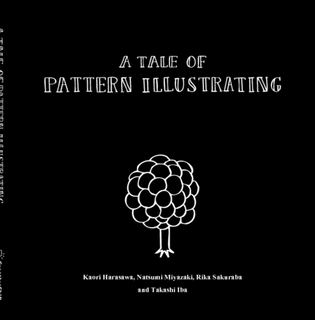 The theory and practice of Pattern Languages have widely spread, and pattern languages for creative activities are created in various domains. One day, a guide from the world of pattern illustrations has appeared in front of a little boy who is writing a pattern. With the help of the guide, the little boy meets many villagers of the world of pattern illustrations and develops his understanding of the importance and excitement of drawing pattern illustrations. This tail invites you to understand what pattern illustrations are and how to draw them.
The theory and practice of Pattern Languages have widely spread, and pattern languages for creative activities are created in various domains. One day, a guide from the world of pattern illustrations has appeared in front of a little boy who is writing a pattern. With the help of the guide, the little boy meets many villagers of the world of pattern illustrations and develops his understanding of the importance and excitement of drawing pattern illustrations. This tail invites you to understand what pattern illustrations are and how to draw them.
[ Amazon.com / Lulu ]
Pursuit of Pattern Languages for Societal Change: Designing Lively Scenarios in Various Fields
-
World Conference on Pursuit of Pattern Languages for Societal Change, 2015, published in a book: Peter Baumgartner, Tina Gruber-Muecke, Richard Sickinger (Eds.), Pursuit of Pattern Languages for Societal Change. Designing Lively Scenarios in Various Fields. Berlin: epubli, 2016
- Takashi Iba, Tomoki Kaneko, Arisa Kamada, Nao Tamaki, Makoto Okada, gWords for a Journey: A Pattern Language for Living Well with Dementiah, pp.152-176
- Takashi Iba, gPattern Language 3.0 and Fundamental Behavioral Propertiesh, pp.200-233
- Takashi Iba, Norihiko Kimura, Yuma Akado, Takuya Honda, gThe Fundamental Behavioral Propertiesh, pp.178-198
- Sumire Nakamura, Takashi Iba, gFostering Changemakers with Change Making Patterns: A Conceptual Framework for Social Change and Its Educational Applicationsh, pp.250-268
- Taichi Isaku, Emi Kubonaga, Takashi Iba, gThe Cooking Language: Applying the Theory of Patterns into Cookingh, pp.234-248
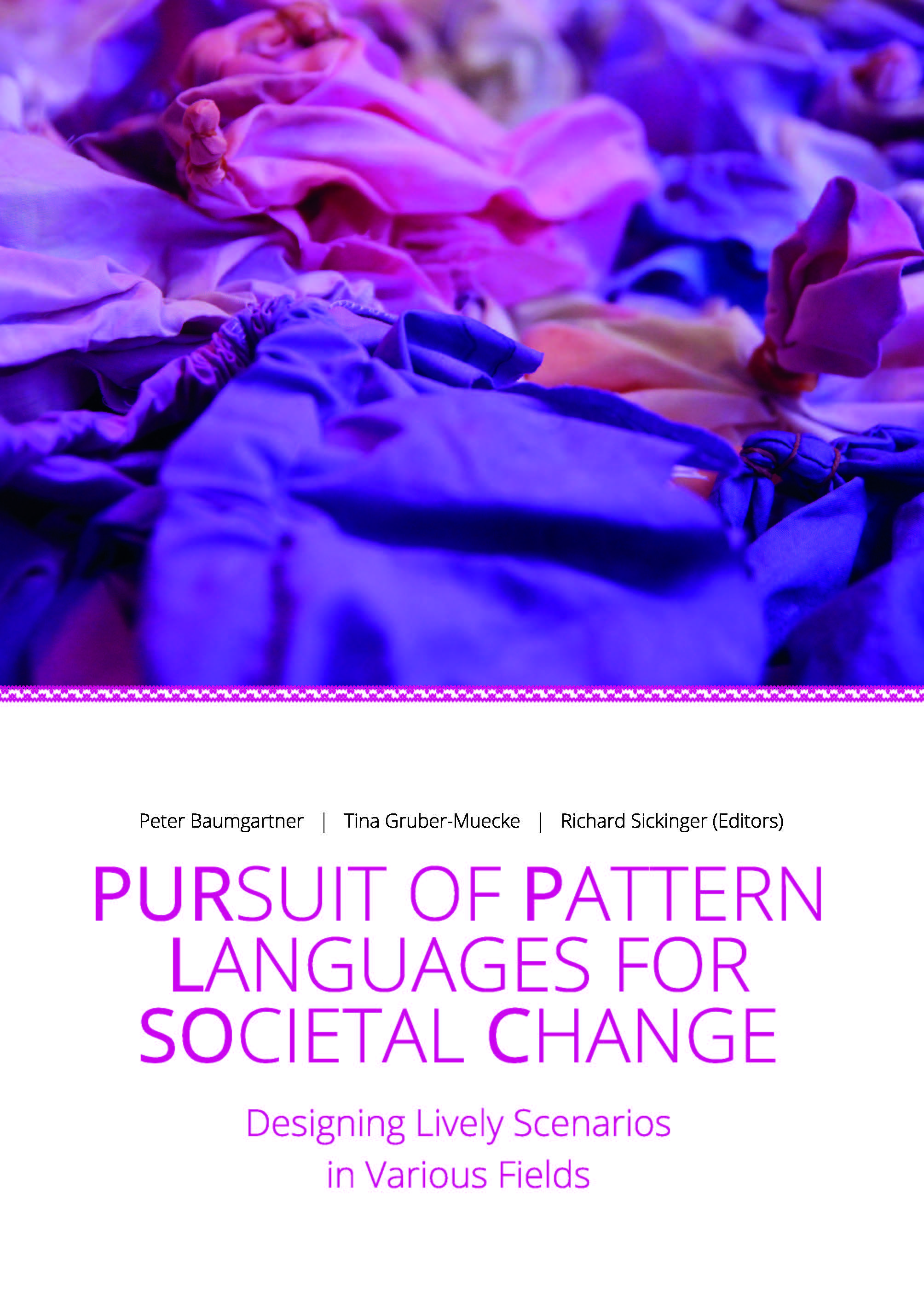 The international PURPLSOC (In Pursuit of Pattern Languages for Societal Change) platform aims to substantiate the relevance of Christopher Alexander's pattern language approach in all major domains by showing its broad applicability and richness and bringing best practice examples from outside the scientific community into research. This anthology of 19 papers, proceedings of the PURPLSOC 2015 World Conference held at Danube University Krems in Austria, is the first outcome of this discussion and reflection. The papers bring a manifold and broad overview of the current state of the implementation of Alexander's ideas in divergent fields. Additionally, PURPLSOC offers a platform for the research and discussion of Alexander's most recent work: "The Nature of Order: An Essay on the Art of Building and the Nature of the Universe" (2004). The four volumes explore the "living process" with its "15 structure-preserving transformations" applied in the "unfolding of wholeness".
The international PURPLSOC (In Pursuit of Pattern Languages for Societal Change) platform aims to substantiate the relevance of Christopher Alexander's pattern language approach in all major domains by showing its broad applicability and richness and bringing best practice examples from outside the scientific community into research. This anthology of 19 papers, proceedings of the PURPLSOC 2015 World Conference held at Danube University Krems in Austria, is the first outcome of this discussion and reflection. The papers bring a manifold and broad overview of the current state of the implementation of Alexander's ideas in divergent fields. Additionally, PURPLSOC offers a platform for the research and discussion of Alexander's most recent work: "The Nature of Order: An Essay on the Art of Building and the Nature of the Universe" (2004). The four volumes explore the "living process" with its "15 structure-preserving transformations" applied in the "unfolding of wholeness".
PURPLSOC: The Workshop 2014
-
Peter Baumgartner, Richard Sickinger (eds), PURPLSOC: The Workshop 2014 (PURPLSOC: Pursuit of Pattern Languages for Societal Change, 1) - Designing Lively Scenarios With the Pattern Approach of Christopher Alexander, Berlin: epubli, 2015
- Takashi Iba, gPattern Languages as Media for Creative Dialogue: Functional Analysis of Dialogue Workshopsh, pp.212-231
- Takashi Iba and Shingo Sakai, gUnderstanding Christopher Alexanderfs Fifteen Properties via Visualization and Analysish, pp.366-381
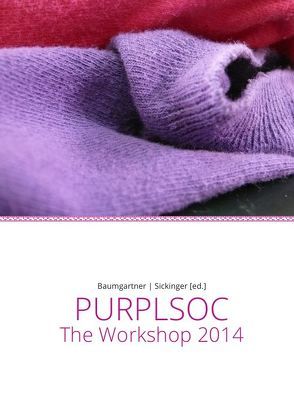 The PURPLSOC (In Pursuit of Pattern Languages for Societal Change) platform aims to substantiate the broad applicability and richness of pattern related work in all fields, and by sharing best practice examples from outside the scientific community to further raise awareness of this approach to encompass the wider public. Additionally PURPLSOC offers a platform to discuss and study Alexanderfs most recent research work (not, as yet, as well known as his primary work A Pattern Language): gThe Nature of Order: An Essay on the Art of Building and the Nature of the Universeh (2004). The four volumes explore the gliving processh with its g15 structure-preserving transformationsh applied in the gunfolding of wholenessh (2004).
This anthology of papers, presented by specialists in the research and implementation of Christopher Alexanderfs work at the PURPLSOC preparatory workshop, is the first outcome of this discussion and reflection. The 19 papers bring a manifold and broad overview of the current state of the implementation of Alexanderfs ideas in divergent fields.
The PURPLSOC (In Pursuit of Pattern Languages for Societal Change) platform aims to substantiate the broad applicability and richness of pattern related work in all fields, and by sharing best practice examples from outside the scientific community to further raise awareness of this approach to encompass the wider public. Additionally PURPLSOC offers a platform to discuss and study Alexanderfs most recent research work (not, as yet, as well known as his primary work A Pattern Language): gThe Nature of Order: An Essay on the Art of Building and the Nature of the Universeh (2004). The four volumes explore the gliving processh with its g15 structure-preserving transformationsh applied in the gunfolding of wholenessh (2004).
This anthology of papers, presented by specialists in the research and implementation of Christopher Alexanderfs work at the PURPLSOC preparatory workshop, is the first outcome of this discussion and reflection. The 19 papers bring a manifold and broad overview of the current state of the implementation of Alexanderfs ideas in divergent fields.
Designing Networks for Innovation and Improvisation
-
Matth us P. Zylka, Hauke Fuehres, Andrea Fronzetti Colladon, Peter A. Gloor (eds.), Designing Networks for Innovation and Improvisation (Springer Proceedings in Complexity), Springer International Publishing, 2016
- Takashi Iba, gSociological Perspective of the Creative Societyh, pp.29-42
- Takashi Iba, Ayaka Yoshikawa, Tomoki Kaneko, Norihiko Kimura, Tetsuro Kubota, gPattern Objects: Making Patterns Visible in Daily Lifeh, pp.105-11
- Norihiko Kimura, Hitomi Shimizu, Iroha Ogo, Shuichiro Ando, Takashi Iba, "Design Patterns for Creative Education Programs", pp.95-103
- Iroha Ogo, Satomi Oi, Jei-Hee Hong, Takashi Iba, gCreating Community Language for a Collaborative Innovation Communityh, pp.21-28
- Yuma Akado, Masafumi Nagai, Taichi Isaku, Takashi Iba, gWorkshop Generator Patterns: A Supporting Tool for Creating New Values in a Workshoph, pp.87-94
- Taichi Isaku, Takashi Iba, gFrom Chefs to Kitchen Captains: A Leader Figure for Collaborative Networks in the Kitchenh, pp.113-121
- Makoto Okada, Yoichiro Igarashi, Hirokazu Harada, Masahiko Shoji, Takehito Tokuda, Takashi Iba, gADR Processes for Creating Strategic Networks for Social Issues: Dementia Projectsh, pp.163-171
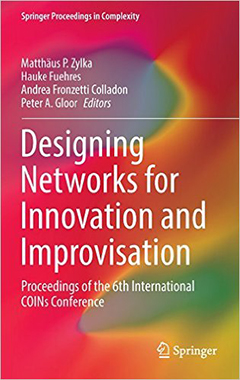 This volume is focused on the emerging concept of Collaborative Innovation Networks (COINs). COINs are at the core of collaborative knowledge networks, distributed communities taking advantage of the wide connectivity and the support of communication technologies, spanning beyond the organizational perimeter of companies on a global scale. It includes the refereed conference papers from the 6th International Conference on COINs, June 8-11, 2016, in Rome, Italy. It includes papers for both application areas of COINs, (1) optimizing organizational creativity and performance, and (2) discovering and predicting new trends by identifying COINs on the Web through online social media analysis. Papers at COINs16 combine a wide range of interdisciplinary fields such as social network analysis, group dynamics, design and visualization, information systems and the psychology and sociality of collaboration, and intercultural analysis through the lens of online social media. They will cover most recent advances in areas from leadership and collaboration, trend prediction and data mining, to social competence and Internet communication.
he current state of the implementation of Alexanderfs ideas in divergent fields.
This volume is focused on the emerging concept of Collaborative Innovation Networks (COINs). COINs are at the core of collaborative knowledge networks, distributed communities taking advantage of the wide connectivity and the support of communication technologies, spanning beyond the organizational perimeter of companies on a global scale. It includes the refereed conference papers from the 6th International Conference on COINs, June 8-11, 2016, in Rome, Italy. It includes papers for both application areas of COINs, (1) optimizing organizational creativity and performance, and (2) discovering and predicting new trends by identifying COINs on the Web through online social media analysis. Papers at COINs16 combine a wide range of interdisciplinary fields such as social network analysis, group dynamics, design and visualization, information systems and the psychology and sociality of collaboration, and intercultural analysis through the lens of online social media. They will cover most recent advances in areas from leadership and collaboration, trend prediction and data mining, to social competence and Internet communication.
he current state of the implementation of Alexanderfs ideas in divergent fields.